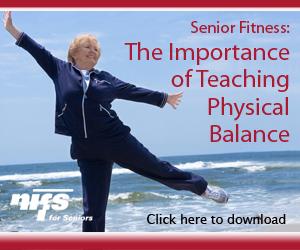 Now that the less obvious tips have been addressed in part 1 of this series, let’s dive into some physical approaches that you can guide your parents through. There are so many exercises that can be practiced in the comfort of their own home to improve stabilization, gain independence, and build confidence. Our last, but certainly not least, tip:
Now that the less obvious tips have been addressed in part 1 of this series, let’s dive into some physical approaches that you can guide your parents through. There are so many exercises that can be practiced in the comfort of their own home to improve stabilization, gain independence, and build confidence. Our last, but certainly not least, tip:
Get your parents active! Talk with your parents about what they are currently doing to stay active, whether it’s a lifestyle activity, like gardening, or an intentional exercise such as strength training. It is important for your parents to stay active through all areas of wellness, but for now, let’s focus on the physical to keep your parents from falling. Here are some exercises that you can coach your parents through to help with fall prevention:
- One-Leg Stance: Stand on one leg at a time for 20 seconds and then gradually increase the time as it becomes more comfortable. Start by holding on, and then try to balance with your eyes closed or without holding on.
- Tandem Stance (Heel to Toe): Stand on your toes for a count of 5, and then rock back on your heels for a count of 5. When comfortable, progress to a count of 10. Repeat 5 to 10 times.
- Hip Circles: Stand with your feet shoulder-width apart and hands on your hips. Make a big circle to the left with your hips, and then to the right. Repeat 10 times.
- Abdominal Squeezes: Sit forward on a chair and sit up straight with shoulders back. Tighten your stomach for a count of 2 and relax. Repeat this 30 times, rest for 1 minute, and repeat 2 times.
- Sit-to-Stand: Start by sitting in a hard, upright chair (like a breakfast or dining room chair) with your feet hip-width apart, ankles right below your knees, and toes pointing straight forward. Reach your hands out in front of you or place your arms across your chest and stand up. Then return to a sitting position. Make sure that you sit slowly and do not “plop down” in the chair. If needed, you can use the arms of the chair but focus on using your lower-body strength to stand upright. Repeat 2 sets of 10 repetitions.
- Tandem Walk: First, find a place where you can take forward steps with something next to you that can give touch support, like a countertop or the back of a couch. Start with your feet together with your side to the support surface. Standing tall, take forward heel-to-toe steps as if you were walking on a balance beam. Take 10 steps or walk until the end of your support surface, whichever comes first. Once you feel more comfortable with this, challenge yourself by walking heel-to-toe backward! Repeat 2 times.
- Balance Stance with Eyes Closed: Stand with your feet together and arms across the chest. Keeping a tall posture, close your eyes and hold this position for about 20 seconds. As this gets easier, progress by increasing the amount of time by 5-second intervals.
If these exercises are too much at once, just pick a few to get your parents started. Once they are comfortable with that, begin introducing more at an appropriate pace. If they need to rely on holding onto a handle or surface to try these exercises, especially in the beginning, that is perfectly fine. Their safety comes first, but remember: falls can be prevented! What are you doing to help prevent your loved ones from falling?


 Have you noticed your parents sitting more and more? Throughout the aging process we tend to become less physically active, therefore decreasing our overall strength. This can lead to many health issues, including loss of balance and eventually falls. Falls in seniors are the number-one cause of fatal and nonfatal injuries. As we all know, the older we get, the harder it can be to recover from any type of injury, so let’s help mom and dad prevent what could potentially alter, or even take, their lives.
Have you noticed your parents sitting more and more? Throughout the aging process we tend to become less physically active, therefore decreasing our overall strength. This can lead to many health issues, including loss of balance and eventually falls. Falls in seniors are the number-one cause of fatal and nonfatal injuries. As we all know, the older we get, the harder it can be to recover from any type of injury, so let’s help mom and dad prevent what could potentially alter, or even take, their lives.
 The number-one challenge that the aging population faces is balance because the number-one concern is
The number-one challenge that the aging population faces is balance because the number-one concern is 

 Good posture
Good posture